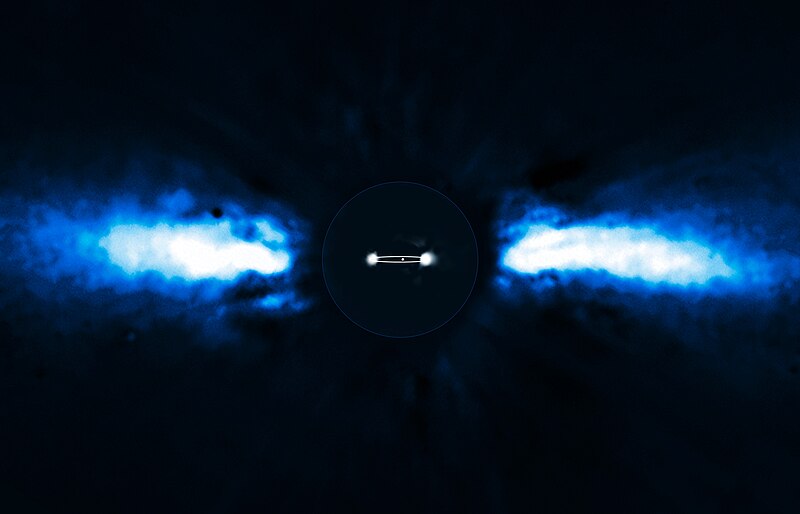File:Beta Pictoris.jpg
Appearance

Size of this preview: 800 × 514 pixels. Other resolutions: 320 × 206 pixels | 640 × 412 pixels | 1,024 × 658 pixels | 1,280 × 823 pixels | 3,000 × 1,929 pixels.
Original file (3,000 × 1,929 pixels, file size: 574 KB, MIME type: image/jpeg)
File history
Click on a date/time to view the file as it appeared at that time.
| Date/Time | Thumbnail | Dimensions | User | Comment | |
|---|---|---|---|---|---|
| current | 18:28, 10 June 2010 |  | 3,000 × 1,929 (574 KB) | KGyST | {{Information |Description={{en|1=For the first time, astronomers have been able to directly follow the motion of an exoplanet as it moves to the other side of its host star. The planet has the smallest orbit so far of all directly imaged exoplanets, lyin |
File usage
The following 3 pages use this file:
Global file usage
The following other wikis use this file:
- Usage on ar.wikipedia.org
- Usage on ast.wikipedia.org
- Usage on en.wikiversity.org
- Usage on es.wikipedia.org
- Usage on fr.wikipedia.org
- Usage on ka.wikipedia.org
- Usage on ko.wikipedia.org
- Usage on mk.wikipedia.org
- Usage on no.wikipedia.org
- Usage on pl.wikipedia.org
- Usage on pt.wikipedia.org
- Usage on ru.wikipedia.org
- Usage on si.wikipedia.org
- Usage on zh-two.iwiki.icu

